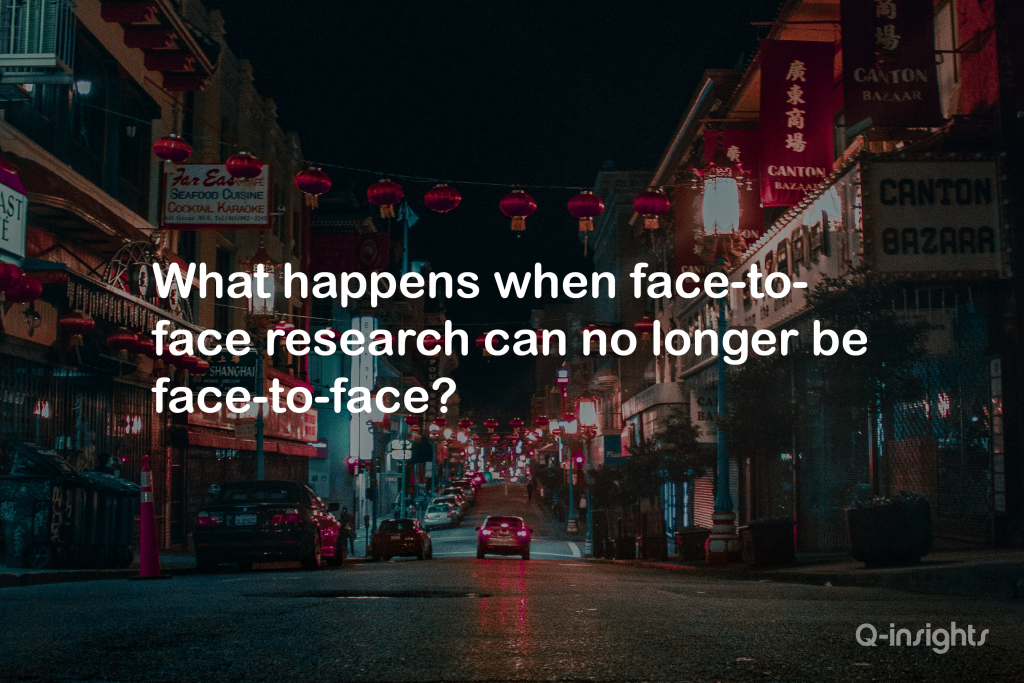What You Should Know Before Moving an In-Person Research Project to an Online Platform
By Jackie Uwins, Uwins Research
First and foremost, we hope you and your loved ones are healthy and safe during this difficult time. In recent weeks, the research industry has faced some difficult challenges. Many of our friends and clients are finding themselves juggling competing priorities in the face of great uncertainty.
With the recent developments of COVID-19, many of our clients are shifting their in-person qualitative to online. Please know, our team is here to help and be a resource for you. If you’re dealing with projects that have been delayed or cancelled, or if you’re looking for a backup plan “just in case,” we can help you keep your projects forward when being there in person is not an option. Over the past few weeks, we have successfully and seamlessly moved many in-person projects to an online platform.
If you’re looking for a solution that can replace in-person qual, but still deliver on the deep, human understanding that qual research provides, there are a variety of qualitative digital methodologies available that can be customized for each client. Webcam IDIs, digital diaries and digital ethnographies, just to name a few, are all great ways to gather deep, focused insights on your brand or category.
Broadly, there are two online qualitative approaches – asynchronous and synchronous.
Asynchronous qualitative (e.g. digital diaries, bulletin boards) are studies where the moderator interacts with respondents over a period of time, e.g. 2-5 days, but they are not online at the exact same time of day.
- In this case, the moderator will log on daily, to a platform, during the length of the project to read through new responses, monitor participation, address notes left by clients, send follow up questions to respondents, and analyze data.
- Typically, we over recruit by 10% to 20% to make sure we have the desired number of completes. The attrition rates will vary per study based on the study topics and the activities or length of the study.
- A good rule of thumb for estimating timelines are it is expected that managing/moderating/analyzing this type of study will take one person about five to six hours per day.
There are multiple platforms on the market to consider. Customer Boardroom, for example, can be used for bulletin boards and journals, digital ethnographies, advisory boards, or in-depth interviews.
There are multiple platforms on the market to consider. Customer Boardroom, for example, can be used for bulletin boards and journals, digital ethnographies, advisory boards, or in-depth interviews.
Synchronous, also known as real-time or engaging qualitative (e.g. digital ethnographies, webcam IDIs, focus groups), are studies in which the moderator and respondent interact at the same time, similar to in-person qual, except remote.
- Key benefits include:
-
- Reduced time, travel, and cost by streaming live directly to your smartphone, laptop or desktop computer
- The ability to capture moment-in-time behavior
- Anonymity for discussing personal or sensitive topics
- Engagement with hard-to-reach audiences
- Easier recruitment, as there are no geographic restrictions
- The ability to replicate live focus group environment and techniques
- The ability to share and gain insights via robust stimuli options, including live polls, dynamic imagery and more
- Client and moderator chats through virtual backrooms
Combining synchronous with asynchronous activities is also an option. Within one project, you can set up a live focus group, and then ask people to complete a bulletin board activity in their free time as a follow up. Adding this additional element gives them more time to complete media-rich activities like uploading photos or videos.
- Whatever method you decide, we have a variety of tips to maximize engagement and success. It’s critical to:
-
- Rescreen respondents as it is an additional opportunity to build rapport and set study expectations.
- Stay on top of project management – don’t let anything slip through the cracks.
- Be diligent in daily moderating, monitoring, and analyzing.
- Send clients daily update emails with excerpts of the best responses and respondent clips to listen to.
- Tips for online groups:
-
- Rescreen each and every respondent.
- Ensure tech checks are conducted ahead of time (and needed software is downloaded).
- Ensure everyone has headsets for maximum clarity and to minimize external noise (kids, sirens in NYC).
- Ensure respondents are at home or in a private space where they can talk freely and not be interrupted.
- Ensure respondents are connected to a computer vs mobile phone/tables when on the go.
- Moderators will need to manage the conversations carefully to ensure no one gets left behind.
- They will have to call on respondents.
- Take notes, show stimulus, and be patient.
- A notetaker/project support is highly recommended to support the moderator.
In a traditional focus group setting, it’s easy to see who is engaged and who might be falling asleep. Raised hands, nods, and smiles give the moderator non-verbal cues to help them lead the group. Some of the key features of Customer Boardroom were designed to mimic these non-verbal cues in an online setting. Live analytics allow observers and moderators to see the question results populate in real time, like raised hands in a focus group. Respondents’ progress through the study is visually displayed, so moderators can quickly see if anyone is left behind. They can send a private direct message to respondents to find out if they need assistance. Observers can also send messages to moderators that are invisible to the group, like passing notes.
Experienced researchers know that the best insights can come out of spontaneous moments. Keeping a conversation fluid and allowing it to deviate from the topic at hand can sometimes yield the best results. Our research staff has a strong background in both qualitative and quantitative research methods. We can help you design your study guide and questionnaire so that your group stays on track while exploring different avenues. We can make recommendations about which question types work best, or which areas should be left open for discussion.
Our hope is that the current health concerns will be laid to rest quickly, and the researchers who specialize in face to face research can go back to their normal routines. In the meantime, we can help you conduct your studies online, so your projects stay on track, and your clients get the insights they need.
About the Author
Jackie Uwins, an expert in Qualitative Research, has worked in this field for 17+ years. She designs, executes, and provides actionable insights for countless complex qualitative studies, and built a reputation for seamless project management. She has an innate ability to connect with people, enabling her to easily uncover emotions and motivations that lie beneath the surface, and bring beliefs about brands and customer experience to light. Even after moderating 4000+ focus groups, ethnographies and other in-person and online research methods, she still finds every new encounter a fresh opportunity for insight. Her experience spans a wide range of industries from retail, CPG and food service to entertainment, automotive and fashion. Her degrees include a BA and MA in psychology and communication from the University of Southern California.
jackie@uwinsresearch.com, (818) 261-5016





